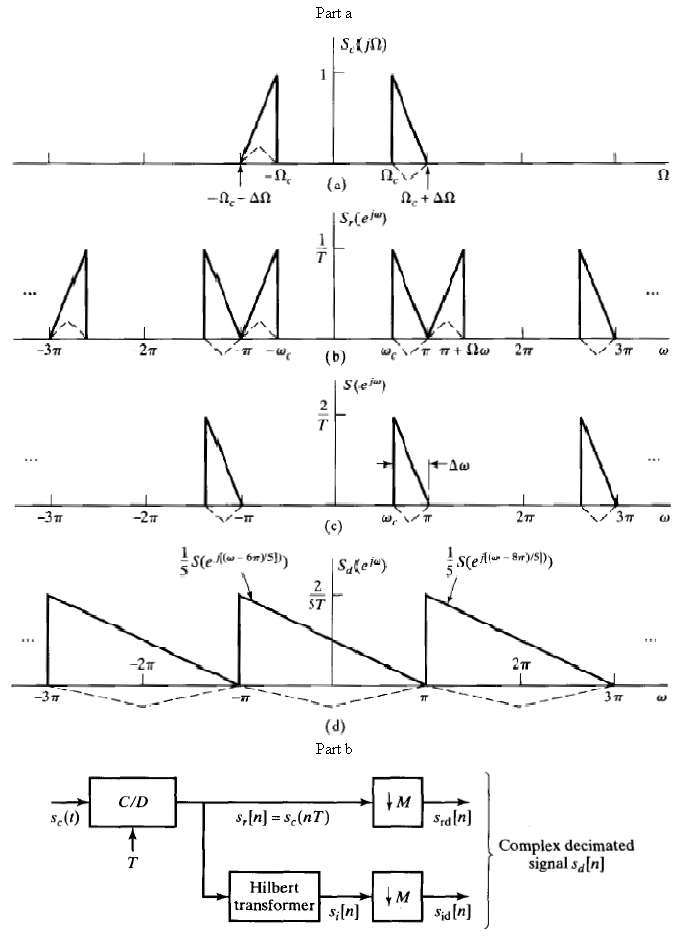In Section 11.4.3, we discussed an efficient scheme for sampling a bandpass continuous-time signal with Fourier transform
Question:
In Section 11.4.3, we discussed an efficient scheme for sampling a bandpass continuous-time signal with Fourier transform such that?
Sc(j?) = 0? ? ? ??for |?| ? ?c and |?| ? ?c + ??.
In that discussion, it was assumed that the signal was intially sampled with sampling frequency 2?/T = 2(?c + ??), i.e., at the lowest possible frequency that aviods aliasing. The bandpass sampling scheme is depicted in Figure. After we form a complex bandpass discrete-time dignal s[n] with one-sided Fourier transform S(ej?), the complex signal is decimated by a factor M, which is assumed to be the largest integer less than or equal to 2?/(??T).
(a) By carrying through an example such as the one depicted in Figure, show that if the quantity 2?/(??T) is not an integer for the initial sampling rate chosen, then the resulting decimated signal sd[n] will have regions of nonzero length where its Fourier transform Sd(ej?) is identically zero.
(b) How should the initial sampling frequency 2?/T be chosen so that a decimation factor M can be found such that the decimated sequence sd[n] in the system of Figure will have a Fourier transform Sd(ej?) that is not alilased, yet has non regions where it is zero over an interval of nonzero length? ?

Step by Step Answer:

Discrete Time Signal Processing
ISBN: 978-0137549207
2nd Edition
Authors: Alan V. Oppenheim, Rolan W. Schafer





